
Pencil, pen, felt tip or chalk, Draw a Picture of a Bird Day is great fun for everyone. It’s very straightforward: simply draw a picture of a bird in tribute to our feathered friends, but if you fancy some diversity there’s actually a wide range of options.
Will you draw a chicken or a chaffinch? Perhaps a peacock, penguin or puffin? If you’d prefer a goose, will it be of the Canadian, Red-breasted, Woods-walking or Spur-winged variety? And you’d be amazed by how many types of hawk there are prowling the skies!
Nostalgia (part 1) thanks, Joan
Word of the Day
| |||
| Definition: | (noun) A metal ring or cap placed around a pole or shaft for reinforcement or to prevent splitting. | ||
| Synonyms: | collet | ||
| Usage: | The walking stick was quite old, and the large brass ferrule at its tip was worn down and dented. | ||
Idiom of the Day
get wise to (someone or something)— To become fully aware or cognizant of someone or something, especially if he, she, or it is suspicious, illegal, or malicious in nature or intention |
History
Tennis Player Arthur Ashe Announces He Has AIDS (1992)
Ashe was the first African-American male to reach prominence in tennis and was thus a very public figure, even after his retirement, which followed a 1979 heart attack and quadruple-bypass surgery. In 1983, he contracted HIV from a blood transfusion during a second heart surgery. He kept it a secret until 1992, when a newspaper threatened to publish a story about his illness. His subsequent openness about AIDS helped combat the disease's stigma.
Sonja Henie (1912)
Henie began ice skating at the age of eight and won the first of six straight Norwegian figure-skating championships within two years. Starting in 1927, she won the world's figure-skating crown 10 straight years, the European title six times, and the Olympic gold medal three times. She introduced music and dance into free skating, greatly broadening its appeal, and turned professional in 1936, earning millions starring in films and ice shows.
Hana Matsuri
| Hana Matsuri is a celebration of the Buddha's birthday, observed in Buddhist temples throughout Japan, where it is known as Kambutsue. The highlight of the celebration is a ritual known as kambutsue ("ceremony of 'baptizing' the Buddha"), in which a tiny bronze statue of the Buddha, standing in an open lotus flower, is anointed with sweet tea. People use a small bamboo ladle to pour the tea, made of hydrangea leaves, over the head of the statue. The custom is supposed to date from the seventh century, when perfume was used, as well as tea. |
Photographing a Black Hole: Historic Campaign Is Underway
The campaign to capture the first-ever image of a black hole has begun. From Wednesday Apr. 5 through Friday Apr. 14, astronomers will use a system of radio telescopes around the world to peer at the gigantic black hole at the center of the Milky Way...
READ MORE:
1789 - The U.S. House of Representatives held its first meeting.
1834 - In New York City, Cornelius Lawrence became the first mayor to be elected by popular vote in a city election.
1873 - Alfred Paraf patented the first successful oleomargarine.
1947 - The first illustrated insurance policy was issued by the Allstate Insurance Company.
1953 - The bones of Sitting Bull were moved from North Dakota to South Dakota.
1975 - Frank Robinson of the Cleveland Indians became first black manager of a major league baseball team.
1986 - Clint Eastwood was elected mayor of Carmel, CA.
1992 - In Britain, the last issue of "Punch Magazine" was published.
2002 - Suzan-Lori Parks became the first African-American woman to win a Pulitzer Prize for drama for her play "Topdog/Underdog."

DAILY SQU-EEK


READERS INFO
1.

April 8 and 9, 2017
further information: The Calico Fort Arts and Crafts Fair, Fort Deposit, Alabama
2.

3.
Lucidity
Apr 7-9, 2017 | Santa Barbara, CA |

Those who are loyal to Burning Man and Coachella should see familiar faces at Lucidity. This music-and-art festival, whose name refers to those dreams that are so vivid they feel real, is good at getting people in such trancelike states that many leave this event feeling like their lives have been changed, or at least shifted, usually for the better.
further information: Lucidity Festival: Eudaimonia - Apr 7 - 9, 2017 - Santa Barbara, CA
4.
Lewisville ColorPalooza: A Celebration of Spring
Apr 8, 2017 -- 10 - 5 PM
Wayne Ferguson Plaza
150 W. Church Street
Lewisville, TX
If those lovely works of art on your parents’ refrigerator is any indication, it’s time to come out of retirement and show off your skills at the Lewisville ColorPalooza. You, fellow amateurs and skilled artists will give the dead remnants of winter a splash of color to celebrate the arrival of spring. Only the finest displays in paintings, sculptures, chalk art and other works of art can rejuvenate the scene before you.
further information: LEWISVILLECOLORPALOOZA.COM
5.
Sopchoppy Worm Gruntin' Festival
Apr 8, 2017
Downtown Sopchoppy
Municipal Ave & Rose St, Sopchoppy, FL

The annual Sopchoppy Worm Gruntin' Festival is a community celebration set in the historic downtown district of Sopchoppy, Florida. The one-day extravaganza features a 5k fun run/walk, dozens of artisans and craftspeople showcasing their one-of-a-kind works, horseshoe championships, a bait-casting competition for kids, a queen pageant and live musical performances from legendary and emerging acts, all culminating in the Worm Grunters Ball.
further information: Worm Gruntin' Festival | Sopchoppy, FL
6.
Tucson 2nd Saturdays Downtown
Apr 8, 2017 | Tucson, AZ
Tucson, Arizona, packs a lot of culture into an ever-growing city. Every second Saturday makes downtown a bustling area filled with entertaining live music, dozens of food trucks and restaurants to conquer a demanding stomach, plenty of shops to cough up a couple dollars at, activities for the children including movies and an abundance of stunning art to gaze at.
further information: 2nd Saturdays Downtown Tucson - Music, Entertainment, Food and Shopping Next Event
Aurelia aurita, popularly known as the moon jellyfish, is a widely studied species of the genus Aurelia. It is translucent, usually about 25–40 cm (10–16 in) in diameter, and can be recognized by its four horseshoe-shaped gonads, easily seen through the top of the bell. It feeds by collecting medusae, plankton, and mollusks with its tentacles, and bringing them into its body for digestion. Capable of only limited motion, it drifts with the current, even when swimming.
TWO CULINARY STUDENTS MADE GIGANTIC,
CHOCOLATE COVERED ROCK CANDY GEODES

Alex Yeatts and Abby Lee Wilcox spent the last six months
making giant chocolate geodes and watching them crack open
is awesome
knit - EASTER
knit
knit
thanks, Lisa
knit
knit
crochet - EASTER
crochet
thanks, Amber
crochet
thanks, Bertha
crochet
thanks, Marge
crochet
RECIPE
thanks, Shelley
CROCKPOT RECIPE
SWEETS - gluten free
ADULT COLORING
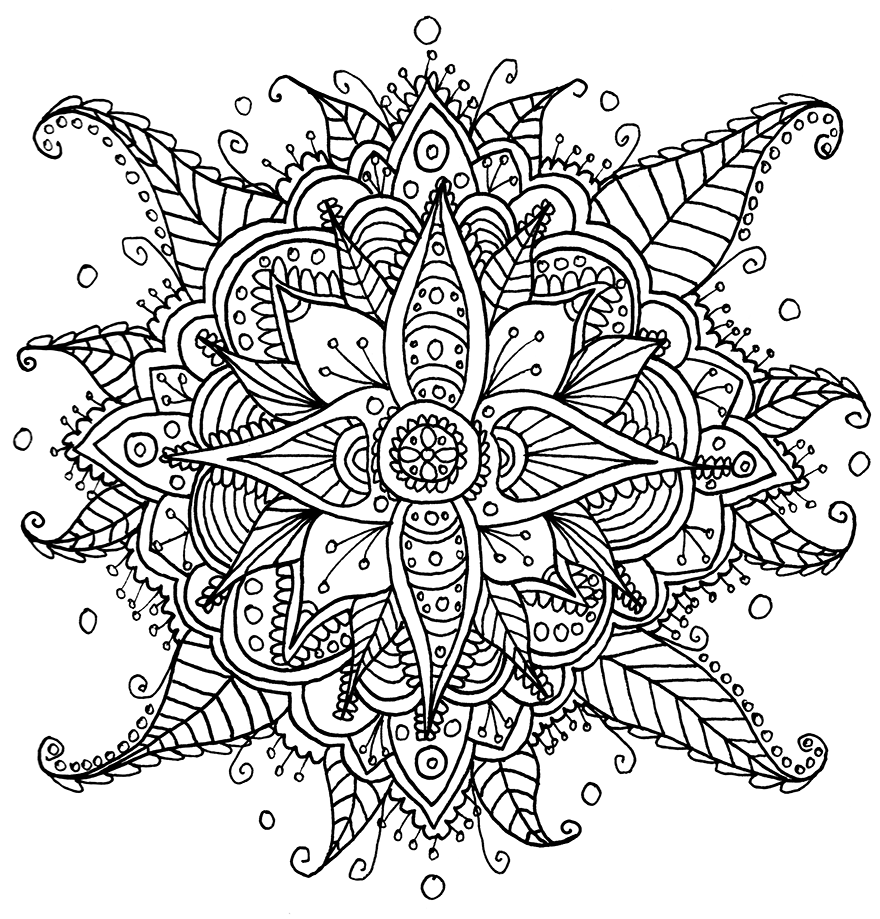
CRAFTS - EASTER
CHILDREN'S CORNER ... EASTER crafts
thanks, Patty
Create Colorful Yarn Wrapped Eggs
craftbits
Have you dyed your Easter eggs yet? How about making these colorful yarn wrapped eggs instead! Check out the list of supplies, follow the instructions and give it a try.

What you need
To make these eggs you'll need:
1. Drained eggs
2. Colorful yarns
3. Craft glue
4. Craft paper
5. Scissors
1. Drained eggs
2. Colorful yarns
3. Craft glue
4. Craft paper
5. Scissors
Instructions
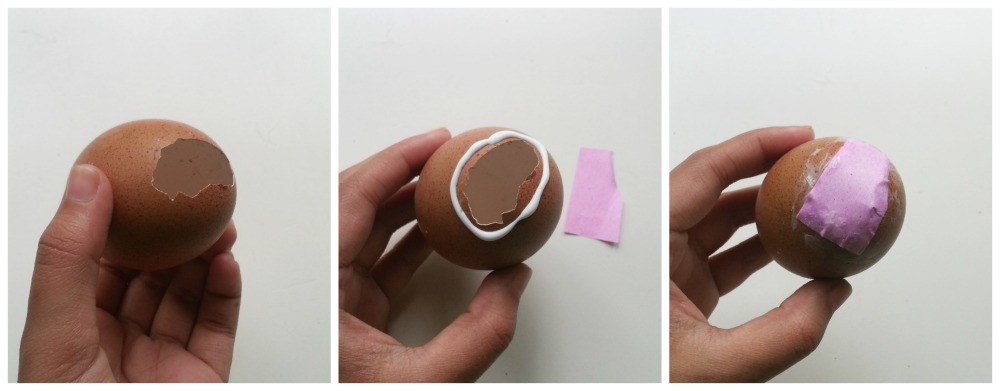
Step-1: You can use egg of any size or color since the egg won’t be visible once wrapped entirely. You can also use store bought plastic Easter eggs. In case your using real egg I think it’s better to drain the egg. Make a small hole on the egg with anything sharp, drain the egg entirely and wash the inside of the egg carefully. After the egg dries take a small piece of paper, glue the area around the hole on the egg and stick the small paper on it to cover the hole.
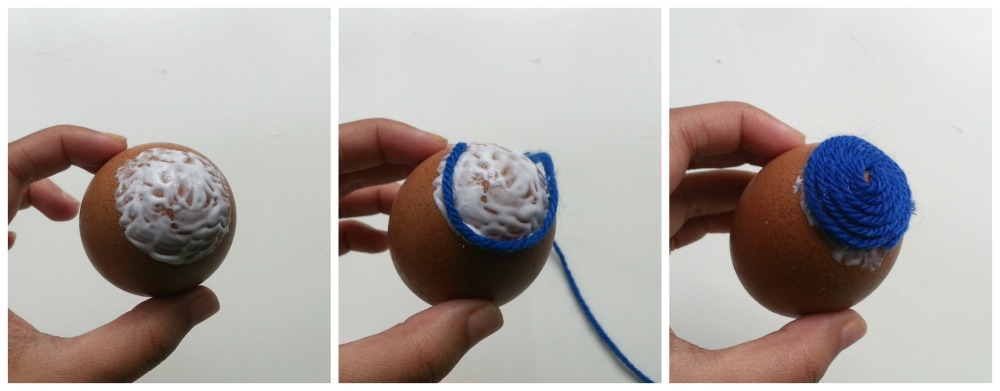
Step-2: Before getting started select 5-6 colored yarns for the egg. Keep a nice color pattern for the egg. Start from any one side. Apply some craft glue on the egg, I started from the top. Take a yarn’s end without cutting it from the bundle. Start to wrap the yarn from the outer edge and wrap your way towards the center of the wrap. After reaching the center apply a drop of glue on the center, cut off extra yarn and press the end of the yarn on the glue.
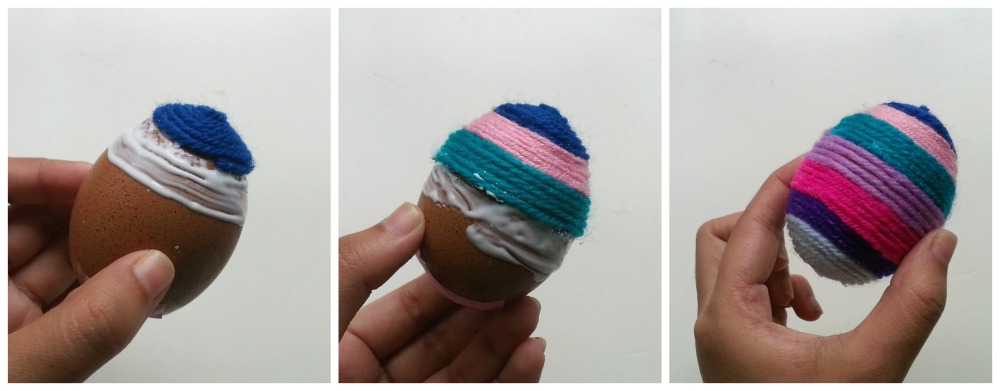
Step-3: Take a different colored yarn and apply a small amount of glue below the first layer. Wrap the yarn and change color once you’re satisfied with the color. Remember to apply enough glue to wrap one color. Do not apply glue on the whole egg at once. Keep doing the same until you reach the other end of the egg.
Done! Use different colors to make more fun patterns. Enjoy!
PUZZLE
WORD SEARCH

| bother coach conspiracy cult curve discuss flush | glide here hurrah insane large leadership | meadow minor night people pies pose pressure price puppies | raises report rise robin round scare slide slur soul sour | sports sunshine sweep throw tone tough truck weight |
QUOTE


CLEVER
YARN HAIR BOW

EYE OPENER
randomhistory
Close to the Skin
A History of Shaving
Humans have always had to deal with hair removal. This seems to have been part of human culture since the Stone Age, when our hunter-gatherer forebears began to sharpen the edges of flint and other items to rid their faces of unwanted hair.
Evidence shows ancient Hindu Indians shaved, while the Egyptians were the first culture to fashion a razor from metals and even used hot towels afterward. It was from the Egyptians that the Greeks and Romans drew inspiration for shaving in their cultures. From there, shaving and the razor spread throughout Europe and, finally, was introduced to North America, where most of the modern improvements in shaving happened in the 20th century, spawned by the invention of disposable razor blades in 1901.
Since then, humans have had their choice of depilatory devices, starting with Jacob Schick’s 1928 electric razor, which led to a shaving “arm’s race” in the 1960s among the various shaving companies. For modern man, shaving has become an easy convenience that we hardly even think about today, but we are always still searching for that closer, more comfortable shave.
Origins
Drawings found in caves, dating back tens of thousands of years, show some men with hairy faces and some without any facial hair at all. Evidence shows that Paleolithic (Stone Age) men used sharpened edges of flint or other found items such as sharks’ teeth and clam shells (Trex) to shave their beards. However, they most likely did not shave for cosmetic or esthetic purposes; rather, they shaved to keep their faces clean of vermin.
The Holy Toilette
 Public outdoor barbershops were common during the Vedic civilization, around 1500 B.C., in IndiaVery early religious grooming traditions existed in the Indus Valley as early as 2500 B.C. When the Indo-Aryans, who were semi-nomadic Nordic whites, invaded northern India around 1500 B.C., ushering in the Vedic civilization, they established very strict rules regarding personal hygiene. These toilette rules were laid down as religious duties, and the people’s thoroughness or lack of it served as an indicator of religious status. Public outdoor barbershops were common and provided shaving, haircutting, manicures, pedicures, nose- and ear-cleaning in India the same time as public barbers in ancient Rome. They are still observable in Indian cities today, often near religious bathing sites along the River Ganges, where barbers provide traditional grooming to accompany the client’s ritual dip, including designs shaved into the stomach hair―still an Indian specialty (Smith). Public outdoor barbershops were common during the Vedic civilization, around 1500 B.C., in IndiaVery early religious grooming traditions existed in the Indus Valley as early as 2500 B.C. When the Indo-Aryans, who were semi-nomadic Nordic whites, invaded northern India around 1500 B.C., ushering in the Vedic civilization, they established very strict rules regarding personal hygiene. These toilette rules were laid down as religious duties, and the people’s thoroughness or lack of it served as an indicator of religious status. Public outdoor barbershops were common and provided shaving, haircutting, manicures, pedicures, nose- and ear-cleaning in India the same time as public barbers in ancient Rome. They are still observable in Indian cities today, often near religious bathing sites along the River Ganges, where barbers provide traditional grooming to accompany the client’s ritual dip, including designs shaved into the stomach hair―still an Indian specialty (Smith).
Egyptians
The Egyptians were the first culture to actually fashion a metallic tool from copper or even gold as a razor to shave and introduced shaving as part of a daily regime. They were also the first documented culture to show an aesthetic interest when they shaved, and they not only removed the beard but also eyebrows as well. Studies of Egyptian art, tombs, and excavation sites dating back to 4000 B.C. show that most people removed all of their body hair, including the hair on their heads. Copper and bronze razors dating back to 3000 B.C. have been found inside the tombs of Egyptian pharaohs. Wealthy Egyptians and members of the royalty even had personal barbers, to help them with shaving (Sherrow).
Egyptian priests were required to shave their bodies all over every other day to guard against the presence of lice, or anything equally unpleasant, while they were about their religious duties, because cleanliness and purity before the Egyptian gods held the highest importance. They shaved their heads; oiled their bodies; kept their feet, hands, and nails clean; rinsed their mouths; and fumigated all their orifices (Smith).
The Novacila
 Shaving among the ancient Greeks became common around 323 B.C. when Alexander the Great demanded that his soldiers go beardlessAs early as 400 B.C., fashionable Greek men were having their beards trimmed, shaped, and oiled regularly. But, clean-shaven faces were not common on a grand scale until around 323 B.C. when Alexander the Great began demanding that his soldiers shave their beards because too many of them were dying when their enemies grabbed their beards in battle. His subjects often shaved using a block of iron with one edge sharpened (Trex). Shaving among the ancient Greeks became common around 323 B.C. when Alexander the Great demanded that his soldiers go beardlessAs early as 400 B.C., fashionable Greek men were having their beards trimmed, shaped, and oiled regularly. But, clean-shaven faces were not common on a grand scale until around 323 B.C. when Alexander the Great began demanding that his soldiers shave their beards because too many of them were dying when their enemies grabbed their beards in battle. His subjects often shaved using a block of iron with one edge sharpened (Trex).
Around 296 B.C., shaving also became common in present-day Italy, during the time of the Roman Republic and Roman Empire. It is thought that popular general Scipio Africanus made daily shaving popular in the Roman Empire. He was reportedly fond of Greek culture and may have been influence by the beardless Alexander the Great (Tschen-Emmon).
The Etruscans, who lived around Rome, used bronze razors. Roman barbers, or tonstrinas, used iron razors with thin blades, called an iron novacila, which they sharpened on a whetstone. Young Roman men usually received their first shave around the age of 21, which also was typically celebrated as a ritual party along with his friends and signaled a passage to adulthood. The young man’s hairs were then typically offered to his favorite god (Sherrow).
Among the Roman military, the fashion of being clean shaven was reinforced when Scipio Africanus Major defeated Hannibal in 202 B.C., who became a legendary hero in the Roman world. Roman soldiers who did want to shave daily would rub their faces with volcanic rock to remove the stubble from their beards (ibid). Artwork even shows legendary emperor Julius Caesar (100–44 B.C.) had his servant pluck out the hairs on his face individually. Bald himself, Caesar often spoke of his foes in Britannia as “the hairy Gauls” and imposed the shaving of mustaches and head as punishment on the defeated Gauls and Britons. The Britons then defied Caesar by wearing long, drooping mustaches dyed green and blue (Barcan).
However, starting with Hadrian (76–138 B.C.), beards came back into fashion again. After early Christians started shaving their facial hair, Emperor Julian (A.D. 332–363) even grew his beard out to distinguish himself from them.
The Middle Ages
Shaving became more common in Europe during the Middle Ages. However, shaving more than once weekly proved difficult as shaving at home at that time required the use of soap to lather the face, and it was a scarce and costly commodity. Most forms of cheap soap were lye based, which irritated facial skin during shaving, and the crude shaving tools left stubble on the shaved area. Medieval monks shaved their faces and most of their hair in a style known as tonsure, in which they shaved the center section of their heads, leaving the rest of the hair forming a sort of “halo.”
 During the Renaissance and throughout the reign of Queen Elizabeth I of England, women frequently plucked or shaved their temples, upper foreheads, and eyebrowsWomen frequently plucked or shaved their temples, upper foreheads, and eyebrows to achieve a bare, elongated look that was popular even during the Renaissance and throughout the reign of Queen Elizabeth I. And soldiers returning from the Crusades (1096–1270) introduced some new grooming ideas that they had learned in the Middle East―particularly, Middle Eastern women at that time were shaving their body hair, and European women decided to adopt the custom. During the Renaissance and throughout the reign of Queen Elizabeth I of England, women frequently plucked or shaved their temples, upper foreheads, and eyebrowsWomen frequently plucked or shaved their temples, upper foreheads, and eyebrows to achieve a bare, elongated look that was popular even during the Renaissance and throughout the reign of Queen Elizabeth I. And soldiers returning from the Crusades (1096–1270) introduced some new grooming ideas that they had learned in the Middle East―particularly, Middle Eastern women at that time were shaving their body hair, and European women decided to adopt the custom.
Around 1520 in Tudor England, King Henry VIII revived the popularity of the beard, and that fashion remained popular in England throughout the 1500s. However, in France, Louis XIII shaved his own head and wore wigs, sparking a fashion trend among French men that quickly spread to other European countries (ibid). This trend was helped by the development of a straight razor in the 1680s that featured a narrow, folding blade. It was made by swordsmiths and had to be sharpened frequently. In the 1750s, the French also developed a shaving brush to apply soap lather before shaving to make the process go a little more smoothly.
The First Safety Razors
 In 1762, French barber Jean-Jacques Perret developed the first version of the safety razorIn the mid-18th century, a French barber named Jean-Jacques Perret wrote a guide to shaving products and techniques called La pogonotomie, ou L'art d'apprendre a se raser soi-meme (The Art of Learning to Shaving Oneself). In 1762, he developed the first version of a safety razor, which featured an L-shaped guard along one side of the metal blade, which made the blade much less likely to cut the person being shaved (ibid). These razors were extremely popular in France and other European countries where people of both genders shaved their heads in order to wear elaborate powdered wigs. In 1762, French barber Jean-Jacques Perret developed the first version of the safety razorIn the mid-18th century, a French barber named Jean-Jacques Perret wrote a guide to shaving products and techniques called La pogonotomie, ou L'art d'apprendre a se raser soi-meme (The Art of Learning to Shaving Oneself). In 1762, he developed the first version of a safety razor, which featured an L-shaped guard along one side of the metal blade, which made the blade much less likely to cut the person being shaved (ibid). These razors were extremely popular in France and other European countries where people of both genders shaved their heads in order to wear elaborate powdered wigs.
In the mid-1800s, straight blades became available in Sheffield, England. Made from forged steel, they required that men use a strop to keep sharpened at home. Most men switched to a new hoe-type razor invented by Englishman William Henson in 1847. Henson’s razor featured a handle placed perpendicular to the blade for easier handling and better control (ibid).
In 1875, three brothers, Richard, Frederick, and Otto Kampfe started the American Safety Razor Company in a one-room shop in New York City. They called their product the Star Safety Razor, and its name and trademark symbols, a single five-pointed star and a row of three stars, were claimed to have been used for the first time on June 1, 1880, for safety shaving devices, razors, and razor blades. The Kampfes advertised their shaving devices as “especially adapted to old and young, and indispensable to travelers, miners, and person’s camping out.” And they were “blades of best steel and full concave which can easily be removed and place in handle for stropping.” Each of these blades cost $1.50 (Waits).
King Camp Gillette
 King Camp Gillette, the founder of the Gillette, found fame as the inventor of the modern disposable safety razorThe Kampfe brothers and their Star Safety Razor never did reach the fame of King Gillette, though, and they and their product more or less became a footnote to shaving history. King Camp Gillette’s story, on the other hand, became something of legend and has been retold in numerous magazine articles and famous first books. King Gillette did not have a formal education when a fire in his native Chicago destroyed all his father’s possessions (Day and McNeil). He first found work in the hardware trade in Chicago and New York and then as a travelling bottle cap salesman. He did have a talent for invention, though, although most of his earliest successful inventions did not prove lucrative. King Camp Gillette, the founder of the Gillette, found fame as the inventor of the modern disposable safety razorThe Kampfe brothers and their Star Safety Razor never did reach the fame of King Gillette, though, and they and their product more or less became a footnote to shaving history. King Camp Gillette’s story, on the other hand, became something of legend and has been retold in numerous magazine articles and famous first books. King Gillette did not have a formal education when a fire in his native Chicago destroyed all his father’s possessions (Day and McNeil). He first found work in the hardware trade in Chicago and New York and then as a travelling bottle cap salesman. He did have a talent for invention, though, although most of his earliest successful inventions did not prove lucrative.
In 1895, he was struck one day while he was honing an old-fashioned razor one morning that―in addition to the potentially dangerous nature of the implement―only a short piece of the whole length of the traditional cutthroat razor is actually used for shaving. He rushed out to purchase some pieces of brass, some steel ribbon used for clock springs, a small hand vise, and some files. He thought of using a thin steel blade sharpened on each side, placed between two plates and held firmly together by a handle. Gillette had no education in metallurgy, and it took him another six years before he could actually claim he made a successful razor from sheet steel that could be tempered and hardened to a keen edge (ibid).
Gillette’s safety razor was an easily discarded carbon-steel blade in a safety holder, and he hoped it would make the straight razor obsolete (Kanner). No one had ever seen anything like it before. He eventually found financial supporters in his brother-in-law, Jacob Heilbron; Henry Sachs, a Boston lamp manufacturer; and a William Nickerson, a professor at Massachusetts Institute of Technology, who proved instrumental in devising ways of forming and sharpening the blades. Gillette applied for his first razor patent on August 11, 1899, but the signing date on the famous U.S. patent 775134 was November 3, 1901. There was a legend that Gillette actually gave out the razor to profit only from the blades, but he actually sold the original silver-plated razor for $5 per device and blades were 20 for $1. He proudly advertised that his product required “No Stropping, No Honing,” which all other razors required previously (Sherrow). In 1901, Gillette formed the American Safety Razor Company, which he later changed to the Gillette Company.
Gillette’s razor wasn’t an overnight success. In fact, it wasn’t until World War I broke out and the U.S. Government ordered 3.5 million of the razors and 36 million blades for the servicemen that his company finally exploded. By the 1920s, millions of men were shaving their faces daily.
For women in the 1910s and 1920s, fashion became more daring, and shaving and razor blade companies like Gillette believed they could sell their products to women in an attempt to get them to begin shaving their legs and armpits regularly as well. Before World War I, virtually no American woman shaved her legs. But by 1964, 98% of all women under the age of 44 did. During the early decades of the 20th century, the word “shaving” itself was considered masculine, so in the May 1915 issue of Harper’s Bazaar Gillette featured a model in its ad for its Milady women’s razor, wearing a sleeveless dress that revealed her smooth armpits with the ad copy “Summer Dress and Modern Dancing combine to make necessary the removal of objectionable hair” (Sherrow).
And during the 1920s and 1930s, women started shaving more than just their armpits and legs. Some actresses, like Jean Harlow, shaved their eyebrows off and redrew them with pencil to create new, chic lines.
A Competitive Industry
In 1932, Gillette introduced the sharper Blue Blade and, 27 years later, it brought out the Super Blue, a silicone-coated blade that reduced friction (Kanner). Despite its innovations in the shaving device, competitors arose, like Wilkinson Sword, an English company that introduced the first stainless steel blade, that most razors make use of to this day. The shaving business proved to be a competitive one.
 Jacob Schick unveiled the first electric dry shaver in 1929 which did not require soap, water, or shaving creamIn the 1920s, Jacob Schick, a lieutenant colonel in the U.S. Army, patented his “magazine repeating razor,” which had replacement clips inside the handle (Sherrow). He believed in the benefits of shaving and supposedly though if a man shaved often enough, he could lengthen his life to 120 years (Trex). In 1929, Schick introduced his next innovation, the injector razor, which was even more popular than Gillette’s early blades, and that same year, he unveiled the first electric dry shaver, which featured oscillating blades and a small motor. By 1931, his dry shaver could be used one handed. The electric shaver did not immediately appeal to the public, though his injector razors sold well. But during the 1930s, Shick’s electric razor become increasingly popular because the shaver did not require soap, water, or shaving cream, making it convenient and portable. Jacob Schick unveiled the first electric dry shaver in 1929 which did not require soap, water, or shaving creamIn the 1920s, Jacob Schick, a lieutenant colonel in the U.S. Army, patented his “magazine repeating razor,” which had replacement clips inside the handle (Sherrow). He believed in the benefits of shaving and supposedly though if a man shaved often enough, he could lengthen his life to 120 years (Trex). In 1929, Schick introduced his next innovation, the injector razor, which was even more popular than Gillette’s early blades, and that same year, he unveiled the first electric dry shaver, which featured oscillating blades and a small motor. By 1931, his dry shaver could be used one handed. The electric shaver did not immediately appeal to the public, though his injector razors sold well. But during the 1930s, Shick’s electric razor become increasingly popular because the shaver did not require soap, water, or shaving cream, making it convenient and portable.
In the Netherlands, the Philips Company benefited from the inventiveness of engineer Alexandre Horowitz. During the 1930s and 1940s, he developed the first double-headed shaver, which Philips marketed as the Philishave Electric Razor and would later be sold to the Norelco Company.
In the 1930s, more companies were also making shaving creams and aftershave products to complement the shavers, including powders, creams, and lotions. One brand of shaving cream called Burma Shave began a unique marketing campaign as catchy rhymes praising the product were posted on billboards along American highways. These billboards were arranged in groups of four to six, with the first signs containing one line of the short rhyme and the final sign containing the Burma Shave name (ibid).
Companies gave shaving products masculine names, and ads stressed that using these products was a manly thing to do. Old Spice, which would go on to become America’s top-selling aftershave lotion, was first sold in 1938. When Mennen brought out its Skin Bracer aftershave lotion in the 1940s, the ad campaign stressed that the product was “100% male” (ibid).
The British Wilkinson Sword Company improved on the carbon blade by using stainless steel in their razor blades, which became―and still is―the standard for use in razors. Cartridge razors―new kinds of injector-style cartridges, similar to those we use today―and new and improved twin-blade razors appeared in the early 1970s. Remington electric shavers also made their debut in the 1970s, becoming extremely popular.
 The Gillette Company returned to prominence in 1975 when it introduced the Atra and Atra Plus shaving systems and the unique, multi-headed Fusion and Mach 3 systemsGillette made a return to prominence in 1976 with its self-lubricating Atra and Atra Plus shaving systems. They followed that up with their Fusion Shaving and Mach 3 systems, which had a unique multihead design, headed up by Mike Trotta, who holds more patents for the Gillette Company that any other engineer (Blaxill and Eckardt). In fact, Gillette, which was bought out by Proctor and Gamble and the Schick Company, spent years in litigation over a patent dispute over the Schick Quattro, which also had a multiblade design. This resulted in the most contentious patent battle of the era of shaving with the case coming down to the meaning of the patent’s key phrase: “a safety razor blade unit comprising a guard, a cap, and a group of first, second, and third blades” (ibid). Gillette and Schick engineers continue watching each other’s inventions like hawks, waiting to see who has the next great idea in the battle for blades and razor technology to dominate the shaving business. The Gillette Company returned to prominence in 1975 when it introduced the Atra and Atra Plus shaving systems and the unique, multi-headed Fusion and Mach 3 systemsGillette made a return to prominence in 1976 with its self-lubricating Atra and Atra Plus shaving systems. They followed that up with their Fusion Shaving and Mach 3 systems, which had a unique multihead design, headed up by Mike Trotta, who holds more patents for the Gillette Company that any other engineer (Blaxill and Eckardt). In fact, Gillette, which was bought out by Proctor and Gamble and the Schick Company, spent years in litigation over a patent dispute over the Schick Quattro, which also had a multiblade design. This resulted in the most contentious patent battle of the era of shaving with the case coming down to the meaning of the patent’s key phrase: “a safety razor blade unit comprising a guard, a cap, and a group of first, second, and third blades” (ibid). Gillette and Schick engineers continue watching each other’s inventions like hawks, waiting to see who has the next great idea in the battle for blades and razor technology to dominate the shaving business.
Conclusion
Despite the improvements and innovations, people still complained about the time spent shaving. Today, we can choose from any number of disposable shaving devices with two, three, or even more blades, electric razors, and even such solutions as electrolysis, waxing, or depilatory creams to remove unwanted hair. People can even join the Dollar Shave Club, launched by Michael Dubin in 2012, which now boasts hundreds of thousands of customers. Dubin wanted to make shaving even easier and more affordable by offering razors, blades, and assorted grooming and skin care products on a subscription basis and delivered directly to customers’ doors. Other companies like Harry’s in Brooklyn are also trying to break up the Gillette-Schick duopoly by offering their own shaving creams and they hope to break into a shaving and hair removal product business that represented US $4.13 billion business in 2009 (Gross).
Shaving has existed and advanced in one form or another since Paleolithic man found a sharp piece of flint or shell to scratch off his beard. There is still always room for more innovation, and as long as humans seek to keep their skin sleek and hairless, the shaving industry will always demand greater ease, affordability, and portability into the future.
|


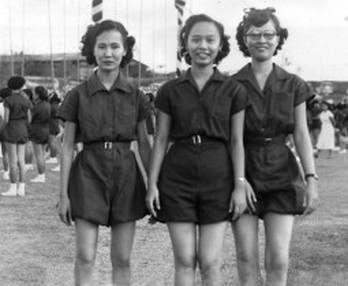
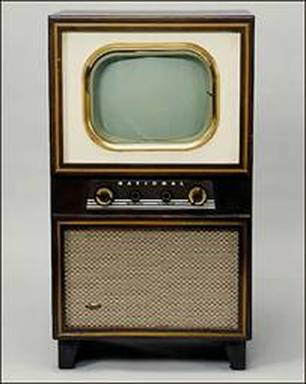



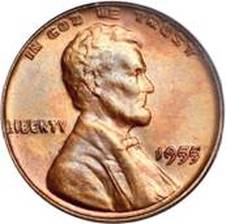



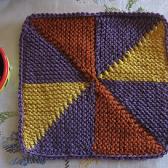

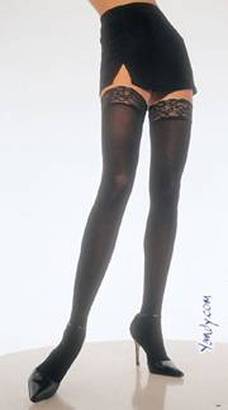




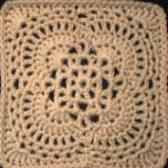


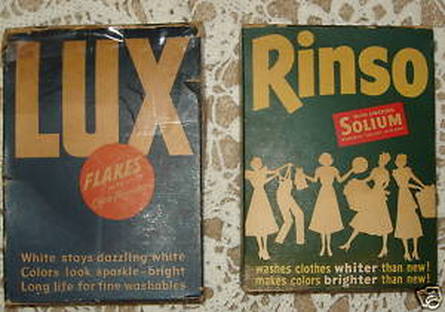

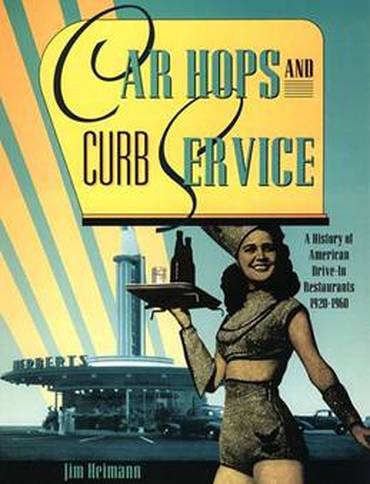

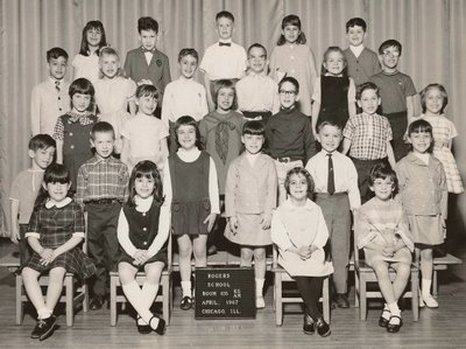
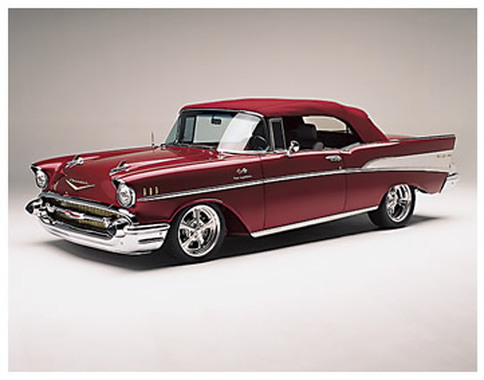

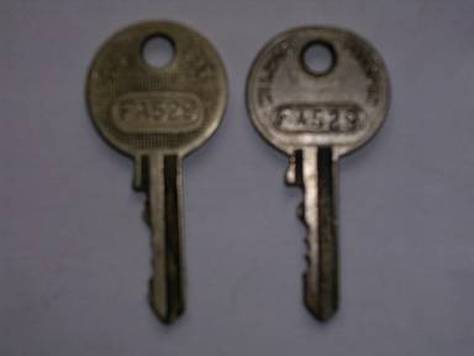

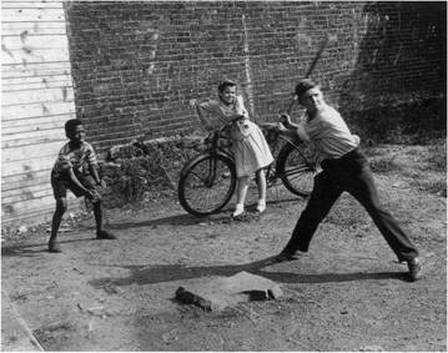

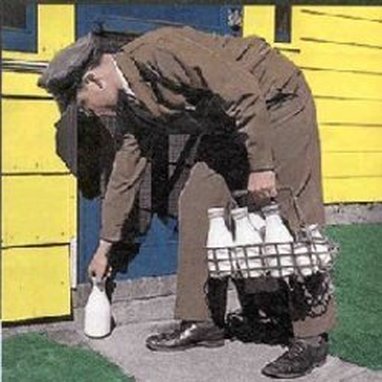

No comments:
Post a Comment